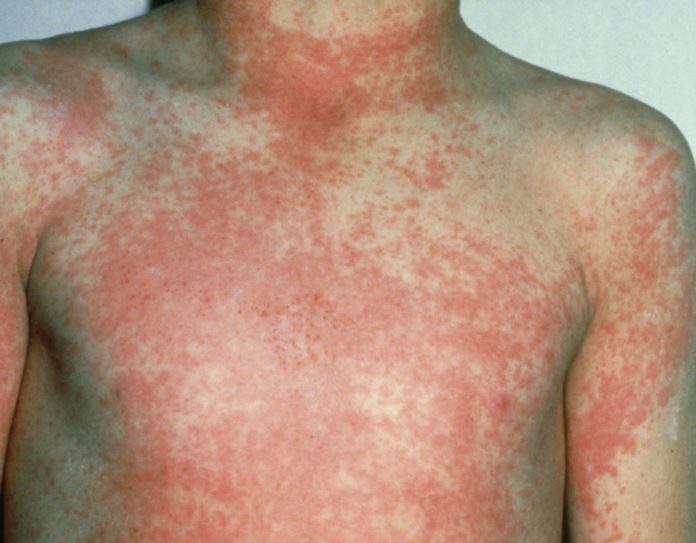Scarlet Fever has been reported at several schools in the Burnham-On-Sea area, prompting a warning about the highly contagious infection which usually affects young children.
It’s common at this time of year, but with several cases confirmed in the Burnham area during recent weeks, parents are now urged to be aware of symptoms.
Scarlet fever cases are at a high according to Public Health England (PHE). While it’s usually a mild illness, because of its infectious nature, PHE is encouraging parents to be aware of symptoms. Complications of the illness which can occur include pneumonia, meningitis and rheumatic fever.
So what are the symptoms of scarlet fever? PHE and the NHS list the following:
- Sore throat
- Headache
- Fever
- Fine, pinkish or red body rash with a sandpapery feel – the rash doesn’t appear on the face but the cheeks can be flushed
- A white coating on the tongue – this can peel, leaving it red and swollen
PHE advises: “If signs of scarlet fever are suspected, it is important to contact your local GP or NHS 111. Early treatment with antibiotics is important as it helps reduce the risk of complications and the spread of the infection to others.”
“Children or adults diagnosed with scarlet fever are advised to stay at home until at least 24 hours after the start of antibiotic treatment to avoid spreading the infections to others.”
Dr Theresa Lamagni, Senior Epidemiologist at Public Health England, reassures that it’s not uncommon to see a rise in cases of scarlet fever at this time of year.
“Scarlet fever is contagious but not usually serious and can be treated with antibiotics to reduce the risk of complications and spread to others.”
“We are monitoring the situation closely and remind parents to be aware of the symptoms of scarlet fever and to contact their GP for assessment if they think their child might have it.”
“PHE is investigating possible reasons for why there has been a rise in scarlet fever cases over the last few years by studying the strains of bacteria causing disease and the spread of infection in different settings and patient groups.”







